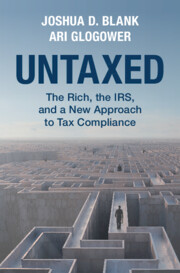Book contents
- Untaxed
- Untaxed
- Copyright page
- Dedication
- Contents
- Acknowledgments
- Introduction
- 1 Tax Noncompliance at the Top
- 2 How the Tax System Addresses Noncompliance
- 3 Means-Adjusted Tax Compliance
- 4 When Are Means Adjustments Fair and Efficient?
- 5 From Theory to Legal Design
- 6 Tax Penalties
- 7 Tax Advice
- 8 The Statute of Limitations
- 9 Tax Information Reporting
- 10 Closing the Tax Information Gap
- Conclusion
- Index
8 - The Statute of Limitations
Published online by Cambridge University Press: 22 November 2024
- Untaxed
- Untaxed
- Copyright page
- Dedication
- Contents
- Acknowledgments
- Introduction
- 1 Tax Noncompliance at the Top
- 2 How the Tax System Addresses Noncompliance
- 3 Means-Adjusted Tax Compliance
- 4 When Are Means Adjustments Fair and Efficient?
- 5 From Theory to Legal Design
- 6 Tax Penalties
- 7 Tax Advice
- 8 The Statute of Limitations
- 9 Tax Information Reporting
- 10 Closing the Tax Information Gap
- Conclusion
- Index
Summary
This chapter considers how the statute of limitations can enable high-end tax noncompliance and prevent the IRS from challenging tax positions of high-end taxpayers. The chapter begins by describing the statute of limitations on tax assessment and the rationale underlying its design, which is followed by an explanation of how it encourages and facilitates abusive tax avoidance by high-end taxpayers. Following this discussion, we present a proposal for incorporating means adjustments into the statute of limitations in order to level the playing field between high-end taxpayers and the IRS.
Keywords
- Type
- Chapter
- Information
- UntaxedThe Rich, the IRS, and a New Approach to Tax Compliance, pp. 183 - 200Publisher: Cambridge University PressPrint publication year: 2024

